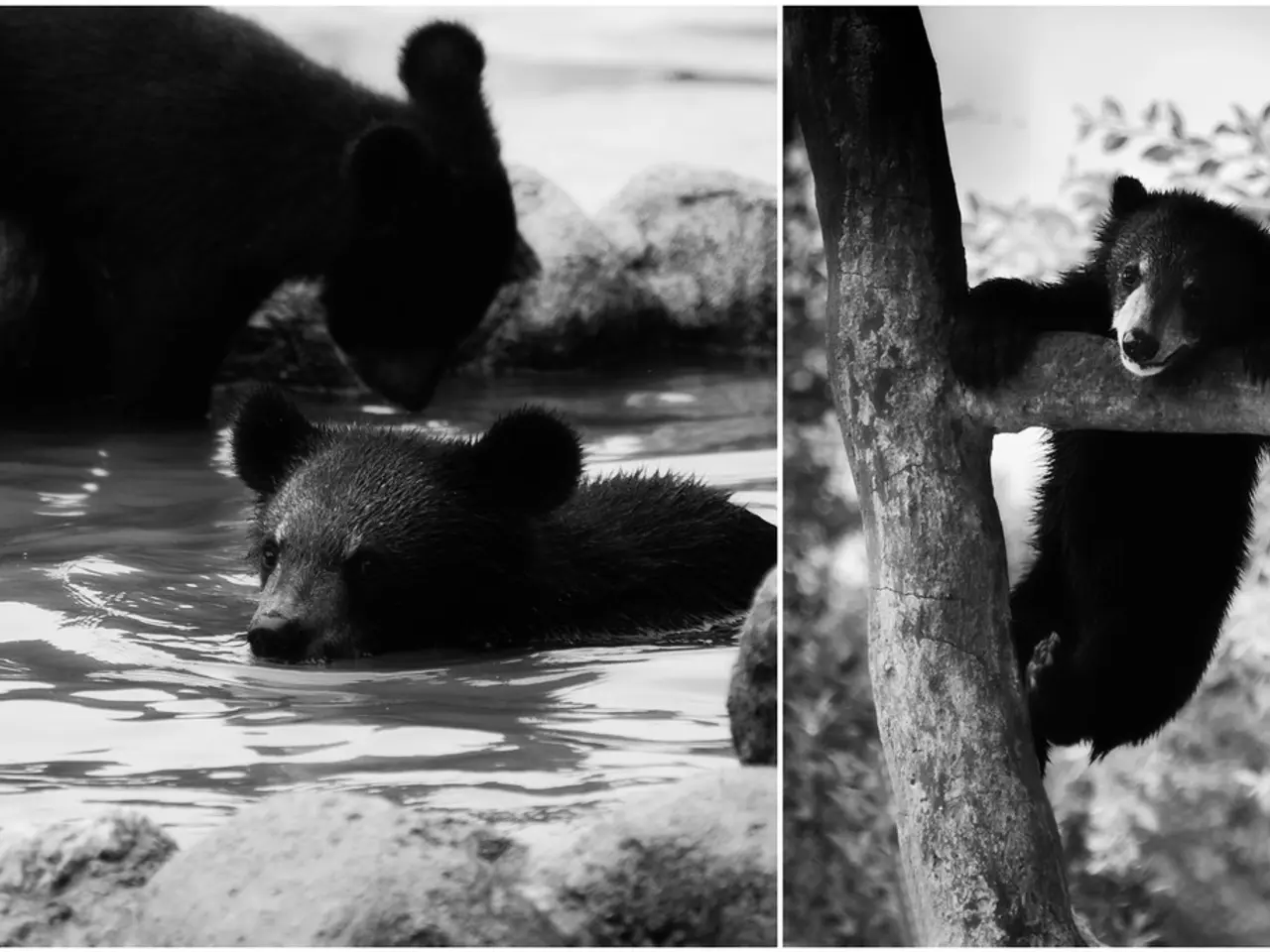Wild Bear Creature: Imposing Mammal of the Untamed - Traits, Environments, and Preservation Efforts
In the expansive landscapes of North and South America, Europe, and Asia, a common thread unites these continents: the presence of the majestic bear. These large mammals, known for their stocky bodies, powerful limbs, and shaggy fur, inhabit a wide range of environments, from forests and mountains to tundras and tropical rainforests.
There are eight recognized species of bears worldwide, each with its unique characteristics and adaptations. Let's take a closer look at these fascinating creatures.
- American Black Bear
Found in North America, the American black bear is highly adaptable and varies in colour from black to cinnamon and even white. These bears are omnivores, feeding on plants, fruits, insects, and occasionally meat.
- Brown Bear
The brown bear family includes the grizzly bear and the Kodiak bear. These bears are found across North America, Europe, and Asia. Like the American black bear, they are omnivores, but their diet may consist more of meat.
- Polar Bear
Native to the Arctic Circle, polar bears are primarily carnivores, feeding on seals. These bears are known for their white fur, which helps them blend into the icy environment.
- Asiatic Black Bear
Also known as the moon bear due to the crescent-shaped mark on their chest, Asiatic black bears are more arboreal compared to other species. They are found in Asia and have a diet primarily consisting of plants and insects.
- Sun Bear
Living in the tropical forests of Southeast Asia, sun bears are known for their long tongues used to extract insects and honey. They are the smallest bear species and are mainly herbivorous.
- Sloth Bear
Native to the Indian subcontinent, sloth bears have a shaggy coat and a diet mainly consisting of termites and fruits.
- Spectacled Bear
The only bear species native to South America, spectacled bears are primarily herbivorous and live in Andean forests.
- Giant Panda
Despite being classified as carnivores, giant pandas found in China feed almost exclusively on bamboo.
Several bear species are considered vulnerable or endangered due to habitat loss, climate change, and poaching. Organizations like the World Wildlife Fund (WWF) and the International Union for Conservation of Nature (IUCN) are heavily involved in bear conservation.
Bears hold deep symbolic meaning in many cultures, representing strength, courage, leadership, ferocity, comfort, and childhood innocence. In Norse mythology, warriors revered bears as symbols of ferocity.
In the wild, most bears live between 20 to 30 years, although some can live longer in captivity with proper care. It's crucial to educate people about bear-proof containers, proper campsite behavior, and discouraging feeding wild bears to minimise human-bear interactions and potential conflicts.
Whether in the Arctic Circle or the tropical forests of Southeast Asia, these magnificent creatures continue to captivate us with their strength and resilience. Let's work together to ensure their survival and preserve these iconic species for future generations.
Read also:
- Peptide YY (PYY): Exploring its Role in Appetite Suppression, Intestinal Health, and Cognitive Links
- Toddler Health: Rotavirus Signs, Origins, and Potential Complications
- Digestive issues and heart discomfort: Root causes and associated health conditions
- House Infernos: Deadly Hazards Surpassing the Flames








